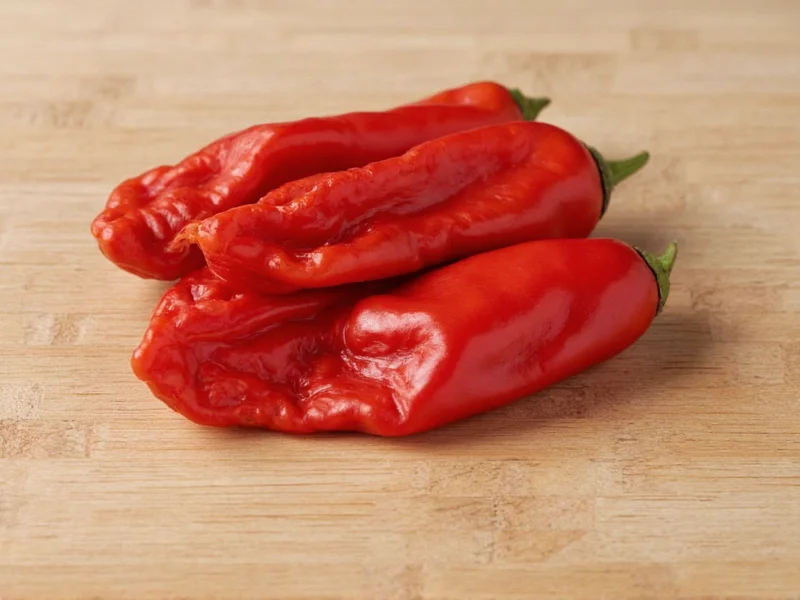Drying chili peppers preserves their fiery flavor for year-round culinary use while concentrating their natural compounds. Whether you've harvested your own garden bounty or bought a surplus at the market, proper drying techniques maintain capsaicin levels and prevent spoilage. This comprehensive guide covers all practical approaches with professional insights you won't find in basic tutorials.
Why Dry Chili Peppers Properly Matters
Improperly dried chilies develop mold, lose potency, or become brittle and flavorless. Correct drying preserves:
- Maximum capsaicin concentration for consistent heat
- Natural sugars that develop complex flavor profiles
- Color integrity for visual appeal in dishes
- Long-term storage viability without preservatives
Air Drying: The Traditional Method
Also called "ristra" drying in Southwestern traditions, this chemical-free approach works best with thin-walled varieties like cayenne or Thai chilies.
Step-by-Step Air Drying Process
- Wash peppers thoroughly and pat completely dry
- Remove stems but keep peppers whole (do not slice)
- Thread string through stems to create a ristra (pepper chain)
- Hang in a dark, warm (70-80°F), low-humidity area with good airflow
- Rotate peppers weekly for even drying
- Test for dryness after 3 weeks (should feel brittle and crinkle when bent)
This best way to dry chili peppers at home without equipment requires patience but develops nuanced flavors. Ideal conditions include 50-60% humidity—higher humidity risks mold while lower humidity causes excessive brittleness.
Oven Drying: Controlled Temperature Approach
Perfect when you need how long to dry chili peppers in oven guidance for quick preservation. This method works for all pepper types but requires careful temperature monitoring.
Optimal Oven Drying Technique
- Preheat oven to its lowest setting (140-170°F / 60-75°C)
- Wash and slice peppers lengthwise (¼ inch thick)
- Arrange in single layer on parchment-lined baking sheets
- Prop oven door open 2-3 inches with a wooden spoon
- Dry for 8-12 hours, flipping halfway through
- Check hourly during final stages to prevent scorching
Maintain consistent low heat—temperatures above 180°F degrade capsaicin. For thicker peppers like habaneros, extend drying time by 2-4 hours. The peppers are done when they snap cleanly rather than bend.
Food Dehydrator Method: Precision Drying
Using a food dehydrator for chili peppers delivers the most consistent results with minimal effort. This approach preserves volatile oils better than other methods.
Professional Dehydrator Settings
- Clean and slice peppers uniformly (critical for even drying)
- Arrange in single layer without touching on trays
- Set temperature to 135°F (57°C) for the first 2 hours
- Reduce to 125°F (52°C) for remaining time
- Dry for 12-24 hours depending on pepper thickness
- Rotate trays every 6 hours for uniform airflow
| Drying Method | Time Required | Equipment Cost | Best For | Flavor Preservation |
|---|---|---|---|---|
| Air Drying | 3-4 weeks | $0-$10 | Thin-walled peppers | ★★★★☆ |
| Oven Drying | 8-12 hours | Existing appliance | Small batches | ★★★☆☆ |
| Dehydrator | 12-24 hours | $50-$200 | All pepper types | ★★★★★ |
Proper Storage for Maximum Shelf Life
Correct storage after drying determines how long your chilies remain potent. Follow these proper storage for dried chili peppers guidelines:
- Condition peppers for 7-10 days in paper bags before final storage
- Store in airtight glass containers away from light
- Include food-safe desiccant packets to control moisture
- Keep in cool location (below 70°F / 21°C)
- Check monthly for moisture or mold development
Well-stored dried chilies maintain peak quality for 1-2 years. For extended storage, freeze in vacuum-sealed bags for up to 3 years without flavor degradation.
Using Your Dried Chili Peppers
Reconstitute dried peppers properly with these techniques:
Rehydrating for Cooking
Cover peppers with boiling water and soak for 15-20 minutes until pliable. For deeper flavor, use broth, vinegar, or citrus juice instead of water. Drain thoroughly before using in sauces, stews, or salsas.
Making Homemade Chili Powder
Grind completely dry peppers in a dedicated spice grinder until fine. Sift to remove seeds and fibrous bits. Store powder in dark glass containers—light exposure degrades capsaicin within weeks.
Troubleshooting Common Drying Issues
Mold prevention requires maintaining proper airflow and monitoring humidity levels. If white spots appear, immediately remove affected peppers and increase air circulation.
For uneven drying, ensure consistent pepper thickness when slicing and rotate trays regularly. Thick stem areas often retain moisture longer—check these spots first for dryness.
If peppers become excessively brittle, you've over-dried them. While still usable, they'll produce more dust when handling and have slightly diminished flavor complexity.
Frequently Asked Questions
Can I dry chili peppers in the microwave?
No, microwave drying creates uneven results and often cooks rather than dries peppers, destroying volatile flavor compounds. The intense heat causes rapid moisture loss that makes peppers brittle without proper dehydration.
How do I know when chili peppers are completely dry?
Properly dried peppers should snap cleanly when bent, not bend or crumble. They'll feel lightweight and papery with no moisture when squeezed. For whole peppers, the skin should separate slightly from the flesh when dry.
Should I remove seeds before drying chili peppers?
Leave seeds intact during drying to preserve flavor compounds concentrated in the placenta. Remove seeds after drying when preparing for storage or grinding. Seeds contain significant capsaicin but can become rancid faster than flesh.
Can I dry different chili varieties together?
Dry similar varieties together but separate significantly different types (like habaneros from jalapeños). Stronger varieties can transfer capsaicin through the air during drying, altering the heat profile of milder peppers. Always maintain physical separation between extremely hot varieties.
What's the best way to rehydrate dried chili peppers for sauces?
For maximum flavor extraction, cover dried peppers with hot liquid (water, broth, or vinegar) and weigh down with a small plate to keep submerged. Soak for 20-30 minutes until fully pliable, then blend with soaking liquid for smooth sauces without fibrous bits.











 浙公网安备
33010002000092号
浙公网安备
33010002000092号 浙B2-20120091-4
浙B2-20120091-4